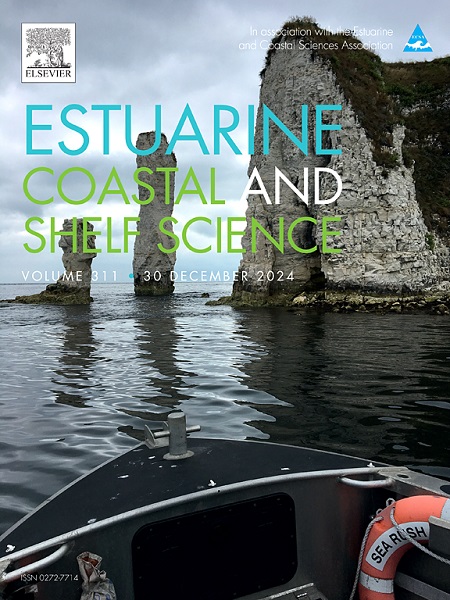Mollusc epifaunal assemblages are simplified due to habitat shifts under ocean acidification
IF 2.6
3区 地球科学
Q1 MARINE & FRESHWATER BIOLOGY
引用次数: 0
Abstract
Ocean acidification can have profound effects on marine organisms, particularly those that rely on calcium carbonate for shell and skeleton formation, resulting in structural changes to marine ecosystems. Here, we contrast the structure of marine mollusc communities (epifauna) associated with an abundant shallow-water macroalga, Halopteris scoparia, in an area with seawater carbonated by natural CO2 seeps and three reference sites, off the Azores archipelago. Epifaunal mollusc abundance and diversity were significantly lower at the CO2 seep compared to reference sites whilst species accumulation curves and Jaccard multivariate analyses showed that the mollusc assemblage was consistently less diverse at the CO2 seep. Most of the abundant epifaunal species that were present at the CO2 seep were also found at reference sites, but less common or rare species were generally absent from the former. We conclude that while some molluscs are likely to cope with ocean acidification, the overall biodiversity of epifaunal molluscs will be simplified under these conditions in a future ocean.
在海洋酸化的条件下,由于栖息地的变化,软体动物的脚外组合被简化了
海洋酸化可能对海洋生物,特别是那些依赖碳酸钙形成外壳和骨架的生物产生深远影响,导致海洋生态系统的结构变化。在这里,我们对比了亚速尔群岛附近一个由自然二氧化碳渗漏形成的海水和三个参考地点,与丰富的浅水大型藻类(scoparia Halopteris)相关的海洋软体动物群落(表动物群)的结构。与对照点相比,CO2渗点的面外软体动物丰度和多样性显著降低,物种积累曲线和Jaccard多变量分析表明,CO2渗点的软体动物组合多样性一直较低。在参考点上也发现了大部分在CO2渗漏中存在的丰富的地表层物种,但较少常见或罕见的物种在参考点上普遍缺失。我们的结论是,虽然一些软体动物可能会应对海洋酸化,但在未来的海洋中,在这些条件下,脚外软体动物的整体生物多样性将会简化。
本文章由计算机程序翻译,如有差异,请以英文原文为准。
求助全文
约1分钟内获得全文
求助全文
来源期刊
CiteScore
5.60
自引率
7.10%
发文量
374
审稿时长
9 months
期刊介绍:
Estuarine, Coastal and Shelf Science is an international multidisciplinary journal devoted to the analysis of saline water phenomena ranging from the outer edge of the continental shelf to the upper limits of the tidal zone. The journal provides a unique forum, unifying the multidisciplinary approaches to the study of the oceanography of estuaries, coastal zones, and continental shelf seas. It features original research papers, review papers and short communications treating such disciplines as zoology, botany, geology, sedimentology, physical oceanography.

 求助内容:
求助内容: 应助结果提醒方式:
应助结果提醒方式:


